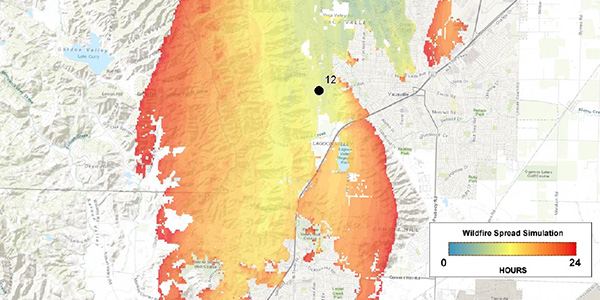The debate over using large-scale blackouts to prevent wildfires in California has become more urgent as the state heads into another fire season after a dry winter, with some urging restraint and others recommending more public safety power shutoffs (PSPS).
Federal Judge William Alsup, who oversees Pacific Gas and Electric’s criminal probation from the 2010 San Bruno gas explosion, is weighing new probation conditions that would require PG&E to expand its criteria for de-energizing lines when nearby trees pose a threat.
The state’s largest utility was blamed for catastrophic wildfires from 2017 to 2020 caused by its equipment contacting vegetation. The blazes include last year’s Zogg Fire, which began when a leaning gray pine tree struck a PG&E transmission line, the California Department of Forestry and Fire Protection concluded in March. (See PG&E Equipment Started Zogg Fire, Investigation Finds.) The fire killed four residents of Shasta County and burned 56,000 acres.
The Zogg Fire prompted Alsup’s proposed probation conditions, requiring the utility to consider hazard trees, like the gray pine, outside its usual clearance zone when determining which lines to shut down in high winds.
The California Public Utilities Commission has opposed Alsup’s proposal, arguing it could double the number of PSPS events and put residents and emergency responders in jeopardy.
“The potential doubling of public safety power shutoff events in PG&E’s service territory under these modified proposed conditions could translate into a corresponding or even greater increase in the public safety perils flowing directly from the use of PSPS,” the CPUC said in a March 19 letter to Alsup.
“PSPS is a vital wildfire prevention and mitigation tool that electric utilities can use, but PSPS itself raises serious public safety consequences by potentially impairing emergency services, water pumping capability and communications infrastructure,” the commission said in a subsequent court filing on March 29.
The CPUC urged Alsup to let it handle PSPS oversight, saying it is already “years into an ongoing and iterative public process — through several formal proceedings and informal processes — of improving PSPS as a tool of last resort, while mitigating the safety hazards that flow directly from the use of PSPS.”
Effectiveness Versus Harm
In a hearing last week, the CPUC focused on the harmful impacts of PSPS on disabled residents and those with medical needs. Shutting off power to customers who rely on electrical equipment is a major concern for commissioners, who have criticized the slowness of PG&E and Southern California Edison (SCE), the state’s second largest utility, to supply battery backup power to vulnerable residents. (See PG&E Working to Improve Safety Blackouts.)
A recent study commissioned by the CPUC, however, found that devastating fires could have occurred without PSPS.
The study by wildfire consulting firm Technosylva concluded that PG&E’s controversial power shutoffs in 2019 may have prevented the burning of more than 3.4 million acres and nearly 283,000 structures. High winds caused hundreds of damage incidents on the utility’s lines that may have sparked fires, including one massive conflagration of more than 3 million acres, Technosylva said. The analysis considered weather and fuel conditions, among other factors.
PG&E’s PSPS events in October 2019 left 2.4 million residents in the dark and led to public outrage and harsh criticism from lawmakers and the CPUC. (See California Officials Hammer PG&E over Power Shutoffs.)
Public anger over PSPS rose again last year when PG&E and SCE made unprecedented use of power shutoffs, blacking out residents through the holidays and into January. CPUC President Marybel Batjer said SCE’s failure to notify customers that a PSPS would be activated on Thanksgiving morning was especially egregious because it disrupted family gatherings.
“These missteps cannot be repeated,” Batjer told the utility during a January hearing. (See CPUC Slams SCE Over Power Shutoffs.)
During a hearing in early March, Assembly Utilities and Energy Committee Chair Chris Holden said PSPS was used 30 times between 2013 and 2019.
“It’s safe to say that we’re all frustrated by the use of public safety power shutoffs by our state’s electric utilities,” Holden said.
Anger over intentional blackouts is expected to play a role in the likely recall election of Gov. Gavin Newsom this fall, during the height of fire season. Proponents of the recall say they have gathered sufficient signatures, though the results have not been certified yet. Newsom’s handling of the COVID pandemic is at the heart of the recall effort.



